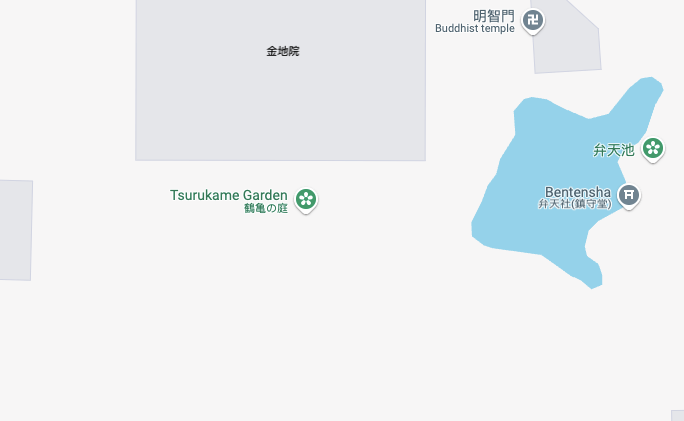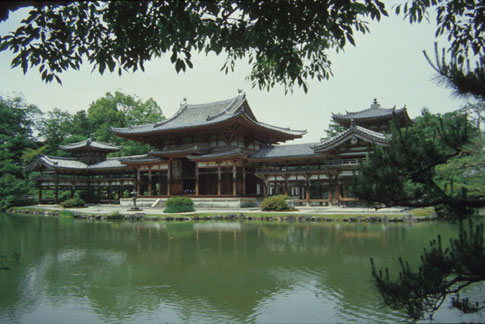
Konchi-in is a subtemple of Nanzen-ji, one of the principal Zen temples of Japan. Its Edo Period garden is notable not only for its formal beauty, but also for the fact that its creation is unusually well documented. The designer was Kobori Enshu, to whom many Kyoto gardens are attributed, often on very little evidence. In this case, however, extant documents indicate that Kobori did indeed design the garden at the request of Sudan, the head priest of Konchi-in, in anticipation of a visit by Iemitsu, the third of the Tokugawa shoguns. Choose a view point from the map or click Tour the Garden for more views of this garden.
Konchi-in is a subtemple of Nanzen-ji, one of the principal Zen temples of Japan. It was founded in Kitayama by Ashikaga Yoshimochi in the early fifteenth century and moved to its present location in 1605. Its Edo Period garden is notable not only for its formal beauty, but also for the fact that its creation is unusually well documented. The designer was Kobori Enshu, to whom many Kyoto gardens are attributed, often on very little evidence. In this case, however, extant documents indicate that Kobori did indeed design the garden for Abbot Suden in anticipation of a visit by Iemitsu, the third of the Tokugawa shoguns. It was begun in 1611 and completed by 1632. Ironically, the shogun's visit never took place, since Suden died in Edo in 1633, never having seen the garden he commissioned. The garden is essentially a shallow screen of rocks and plantings located to the east of the main hall of the temple, and separated from that building by an expanse of white gravel. Its notable features include two rock formations suggesting the turtle and the crane, traditional symbols of longevity in Chinese and Japanese thought (the garden is sometimes referred to as Tsurukame no Niwa, "Garden of Tortoise and Crane"). These elements flank a central area in which a cluster of stones evoke the mountain islands of Horai, the home of Daoist immortals (Horai is said to rest on the back of turtles, and its inhabitants to travel on the backs of cranes). The symbolic nature of these elements is specifically related to a building erected just to the east of the garden and once visible from the veranda of the main hall, a memorial shrine dedicated to Tokugawa no Ieyasu, grandfather of the man whose visit this garden was designed to celebrate. Suden had served Ieyasu first as a warrior and then as priestly adviser, and it is clear that the garden and the shrine were intended to declare the wider association of the temple and the Tokugawa shogunate.

